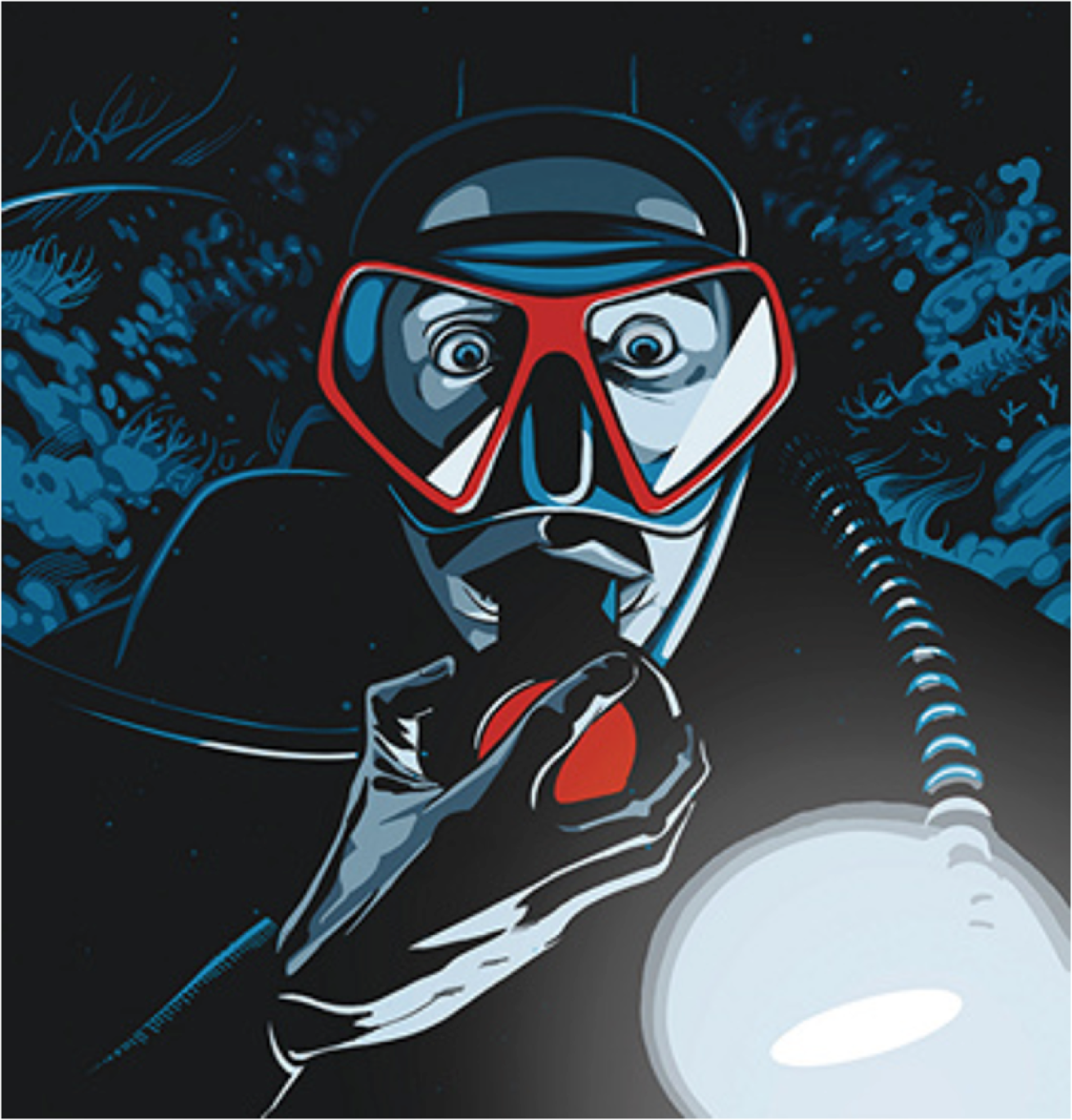A Night to Remember | Lessons for Life

Steven P. HughesAvoidable issues arise when divers neglect basic safety training.
Ken and Wendy were excited to make a night dive and see how differently things look in the dark. Just a few minutes into the dive, Ken noticed it was getting harder to breathe. And then, no air came from his reg.
The Diver
Ken and Wendy were both experienced divers. Wendy was a former dive instructor and Ken had been diving for years. They met through diving and fell in love. They were both active and in good health with no known health conditions.
The Dive
The divers were going out on a special night-dive trip organized by a local dive shop. For both of them, diving at night was both more peaceful and more exciting. During a day dive, they felt like they spent their time looking at the entire forest, whereas diving at night forced them to slow down and look at the individual trees. Seeing only what was in the beam the reef. Conditions were good. Winds from earlier in the day had died down and there were only slight rollers on the surface. The reef was in about 40 feet of water, so they knew they would have plenty of time to explore.
Both divers geared up quickly and made their giant strides into the ocean. Following the boat crew’s instructions, they signaled that they were OK and then descended to the bottom to wait on the rest of the group. A divemaster planned to lead the dive.
The Accident
As soon as everyone was assembled near the bottom, the group headed off to explore the reef. That’s when Ken realized it was suddenly getting harder to breathe. He got half a breath and then there was nothing left in the tank. He was out of air.
Ken glanced at the surface and then looked around for Wendy. She was swimming away from him, but clearly she was closer than swimming toward the surface. It took him just a few moments to catch up to her, but between the exertion and the panic that was beginning to sink in, he was already starting to feel desperate for his next breath.
Ken signaled to Wendy that he was out of air. She immediately handed him her alternate air source and grabbed his arm and BCD to get him under control. Ken grabbed the alternate regulator upside-down and put it in his mouth. It took him several tries to finally get some air, but when he did, he inhaled water as well. Ken signaled to Wendy that they needed to ascend.
On the surface, Ken dropped his weights and Wendy inflated her BCD. They called for help and the boat crew quickly came to their aid and got them back on board.
Analysis
The divers handled this emergency situation fairly well. They didn’t panic on the bottom and were able to make a safe ascent. They both walked away and were able to make many more dives together.
There were some problems, of course, beginning with the dive operation mistakenly giving Ken a nearly empty tank. A crewmember accidentally grabbed an empty tank, expecting it to be full, and loaded it onto the boat.
However, just as importantly, both divers were so excited and in such a hurry to start the dive they forgot to do a simple predive safety check. Ken never actually checked his pressure gauge to see if he had a full tank before jumping in.
Many experienced divers get casual or lazy with predive safety checks, especially when they are diving with their regular buddy. Gearing up and getting in the water can become routine after a while. There are statistics that show an increase in dive accidents for divers with more than 10 years of experience. Often, those divers start to take basic emergency procedures for granted or violate standard safety rules. That situation has been covered many times in this column.
Simply taking a moment to check your gear and your buddy’s gear to make sure everything is working properly can help avoid a serious problem later. When Wendy gave Ken her alternate regulator, she should have maintained control of the regulator and ensured he took it right-side-up. That would have prevented Ken from struggling to breathe and inhaling water. This technique is covered during open-water training.
On the surface, Ken couldn’t inflate his BCD because his tank was empty. If he had sufficient air in his lungs, he could have orally inflated his BCD on the surface and then swum to the boat, but instead he dropped his weights to keep himself buoyant. The skill of orally inflating a BCD is a basic self-rescue skill every diver learns in their open-water course.
Lessons For Life
Perform a predive safety check. It is very easy to forget small but crucial steps—like securing weights or not connecting a low-pressure inflatorif you’re in a hurry.
Practice skills. Basic skills like cramp removal, clearing a flooded mask or orally inflating a BCD might feel like skills for beginners, but they are part of dive classes for a reason: They save lives in an emergency. Take a few minutes at the end of a dive to practice these skills.
Trust, but verify. Even though most dive crews are well-trained and professional, any time you add humans into the mix, errors will happen. That’s why checking your air supply is part of predive safety checks.










